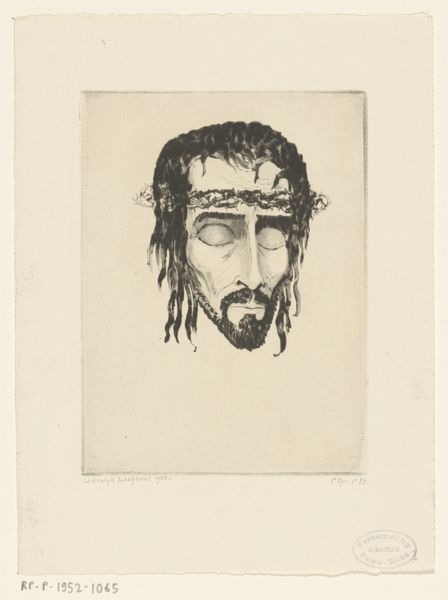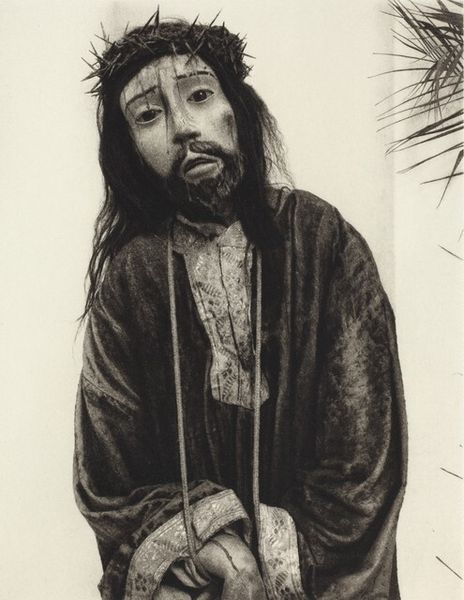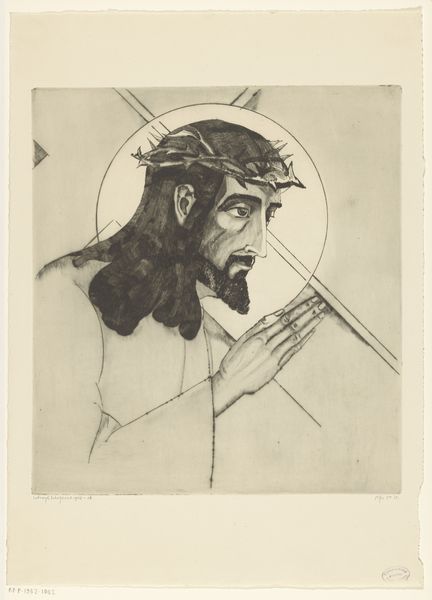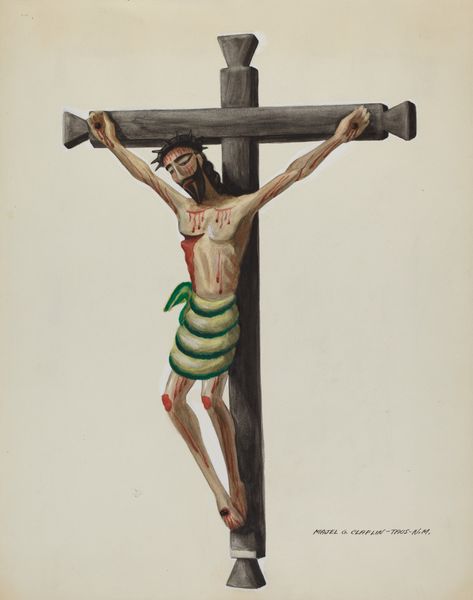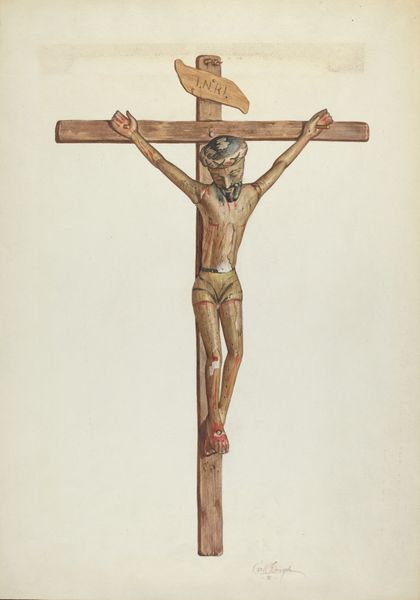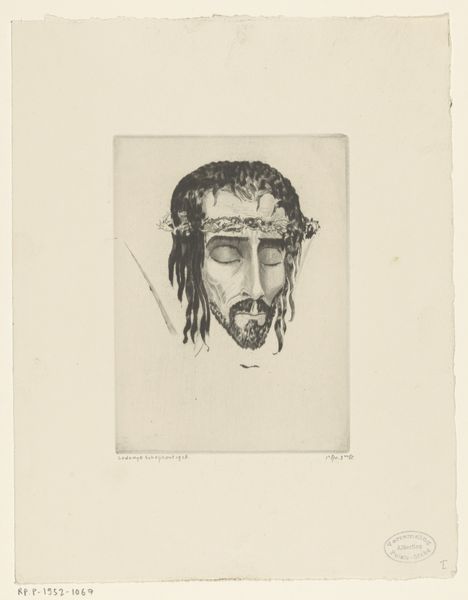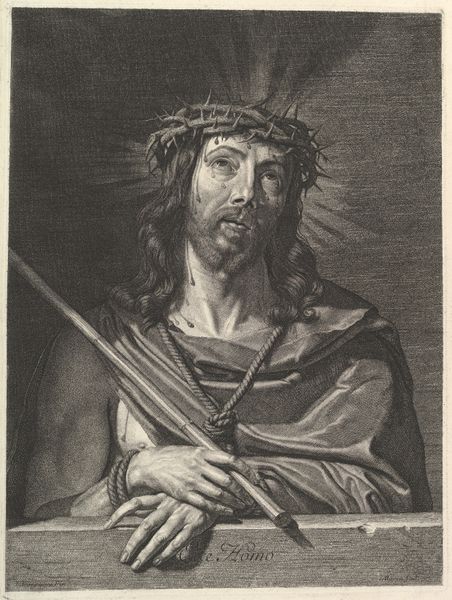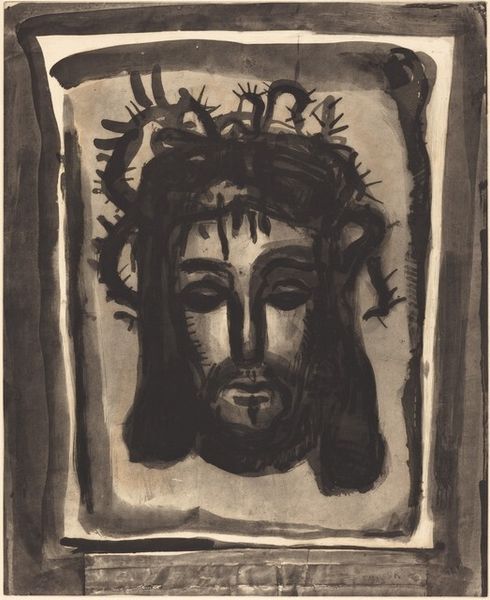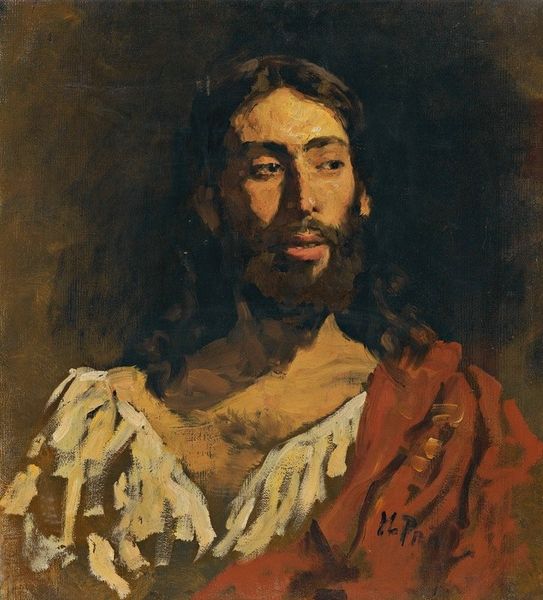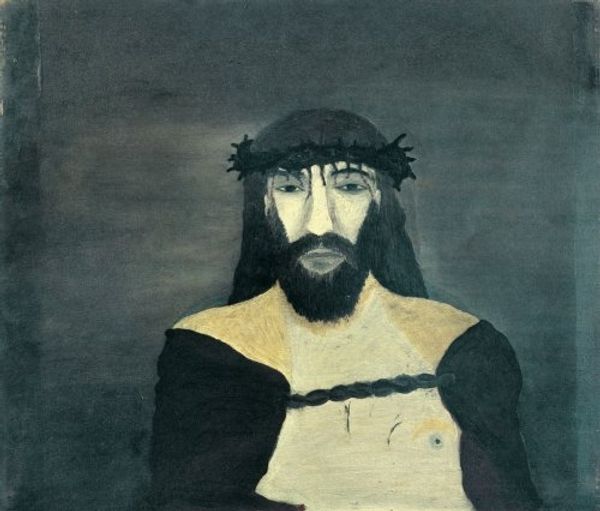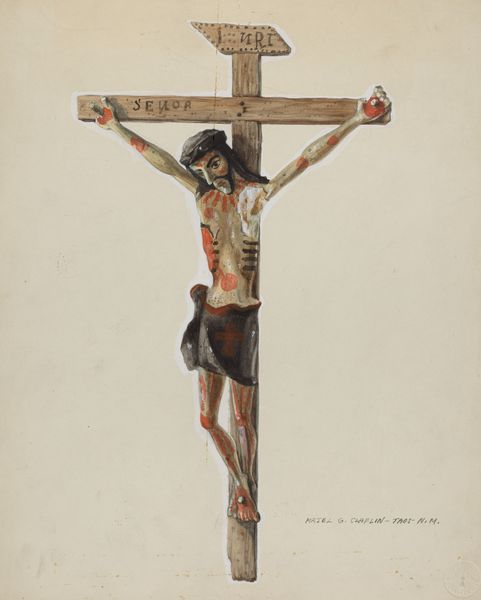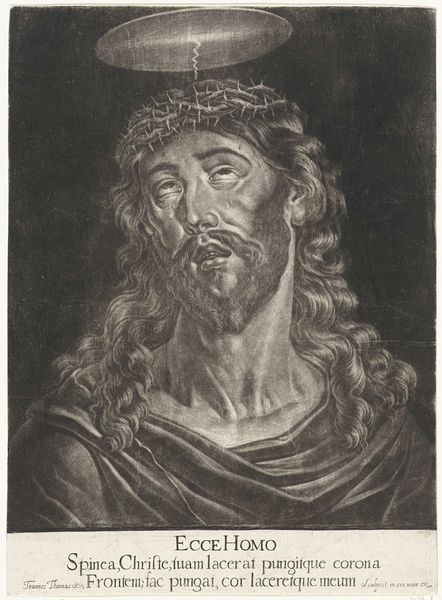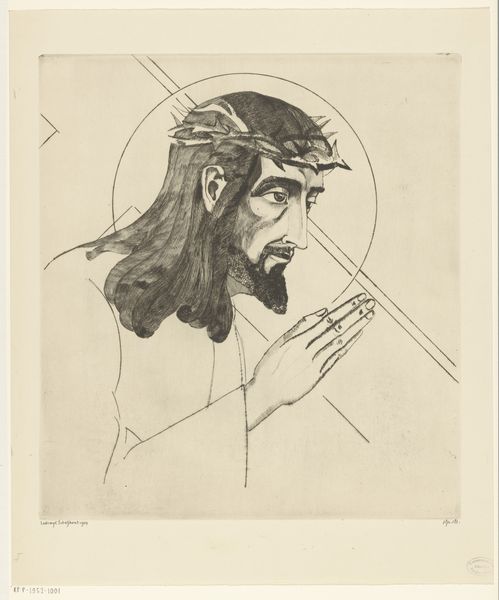
Dimensions: overall: 63.8 x 51.1 cm (25 1/8 x 20 1/8 in.) Original IAD Object: 57" high
Copyright: National Gallery of Art: CC0 1.0
Curator: We’re looking at Eldora P. Lorenzini's watercolor and drawing, "Penitent Christ" from 1937. Editor: My initial reaction is… unsettling. The stark gaze and caricature-like features clash with the gravity of the subject matter. Curator: Indeed. Note how Lorenzini uses watercolor to flatten the image. There's a distinct lack of chiaroscuro. Instead, the expressive lines emphasize the symbolic weight of the crown of thorns, the rivulets of red… pigment. Editor: I see it as a bold critique of religious iconography. Lorenzini is not simply depicting a historical figure but exposing the brutal reality of the crucifixion narrative, possibly commenting on its pervasive presence in contemporary culture. Look at the oversized features, almost grotesque, perhaps illustrating the absurdity of violence committed in the name of faith. Curator: The medieval art movement echoes, though. She does so by reducing form to basic shapes and employing symbolism directly; notice, for example, how his red garments and visible wounds are rendered without much subtlety and in raw hues of red. There is almost an intentional crudeness in form here. Editor: And isn't it striking that the rendering is titled “Penitent Christ?” Is Lorenzini suggesting societal guilt or asking the audience to reflect on their own potential complicity? After all, she did produce this work shortly before the Second World War began, an interesting comment about the contemporary sociopolitical context in which violence had once more engulfed Europe. Curator: An intriguing thought. Her style choices here, particularly within a traditional theme, could be about reevaluating spiritual concepts within the escalating tensions of the time. Lorenzini urges her contemporaries to really rethink their role in society by adopting medieval art, almost archaically so. Editor: She challenges us to acknowledge the uncomfortable truths embedded within established power structures and confront their lasting consequences. The expressionistic approach almost shouts. Curator: By pairing art historical movements and modern themes, her drawing leaves much to unpack and makes no attempts to resolve historical tensions. Editor: Right. I think “Penitent Christ” confronts us, personally, with questions of faith, violence, and moral accountability.
Comments
No comments
Be the first to comment and join the conversation on the ultimate creative platform.
